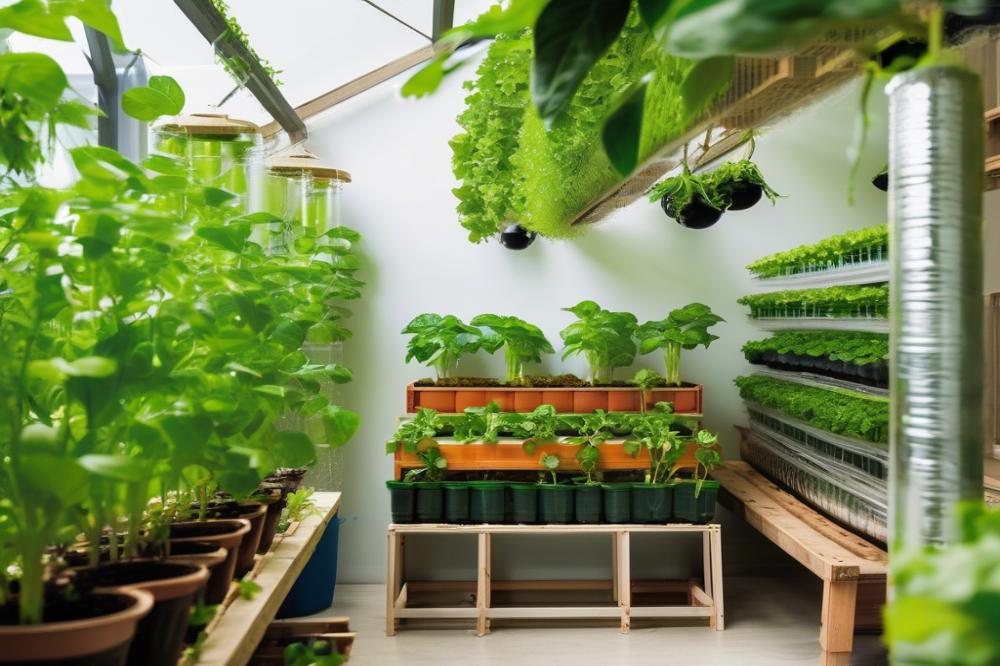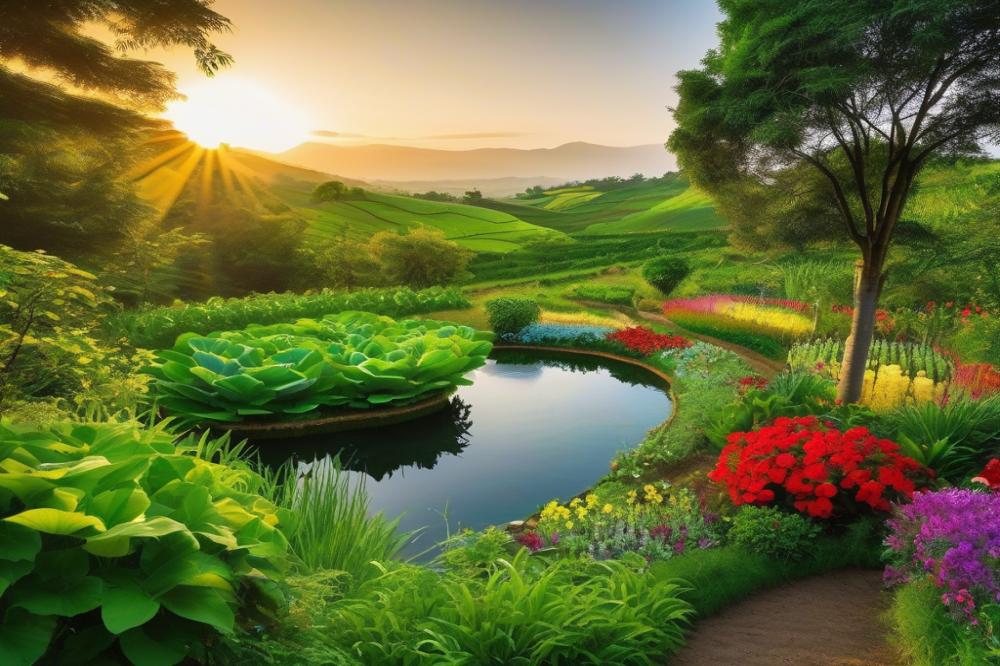Using recycled materials in hydroponic gardening
hydroponic gardening is an innovative method that allows plants to grow without soil. This technique has captured the interest of many urban gardeners looking for efficient ways to cultivate food. With the challenges of limited space in cities, soil-less gardening provides a practical solution. Growing fresh produce indoors or in small backyards is now more accessible than ever. Home gardeners find joy in nurturing plants with the help of nutrient-rich water solutions.
The importance of sustainability in gardening cannot be overstated. As environmental challenges loom, eco-friendly practices become essential. sustainable gardening helps to reduce the carbon footprint associated with food production. By adopting green practices, individuals can contribute to the fight against climate change. Using resources wisely is part of this effort, as is the concept of waste reduction. The idea is to use what you already have and minimize reliance on new materials.
Utilizing recycled materials in growing systems promotes upcycling. This approach can give new life to items that might otherwise end up in landfills. Instead of purchasing expensive containers, DIY hydroponics projects can be created using everyday objects. Old plastic bottles, containers, and even pallets can be transformed into plant holders. Furthermore, this method not only saves money but also creates a unique gardening experience.
Incorporating recycled materials is beneficial on many levels. It encourages creativity in urban gardening and enhances the décor of small spaces. Resource management becomes a key topic as gardeners find innovative uses for discarded goods. The combination of low-cost and sustainable gardening thus becomes both practical and appealing. Ultimately, using upcycled components allows for responsible gardening that respects the environment.
Understanding Hydroponic Gardening
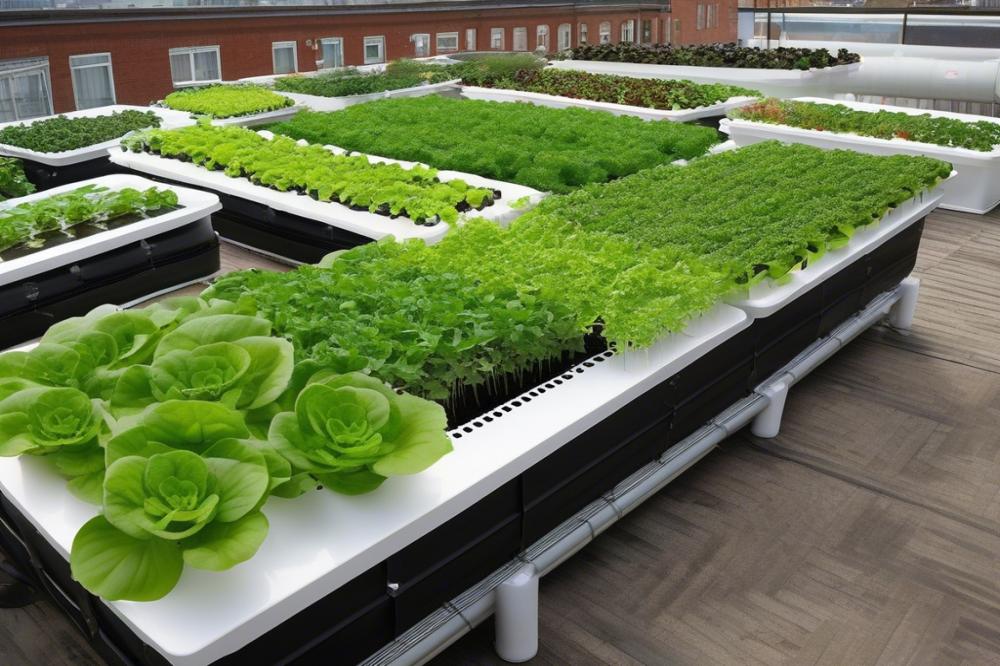

Hydroponic gardening involves growing plants without soil. Instead of traditional dirt, plants thrive in nutrient-rich water solutions. This method supports faster growth and can produce high yields in a shorter time. The principles focus on delivering essential nutrients directly to the root systems. This efficiency allows for better resource management, especially in urban settings where space is limited.
When comparing this technique to conventional soil gardening, the differences become clear. Soil gardeners depend on the earth’s natural nutrients and processes. In contrast, soil-less gardening provides more control over every aspect, including pH levels and nutrient concentrations. Therefore, gardening enthusiasts can tailor their setups more precisely to their plants’ needs. They don’t need to worry about pests or soil diseases as much as traditional gardeners.
Many benefits arise from these green practices. Urban and container gardening gain from hydroponics as it fits neatly into small spaces. People living in apartments can grow food on balconies or kitchen countertops. Waste reduction comes into play as many DIY hydroponics projects utilize recycled materials, minimizing unnecessary trash. Upcycling encourages creativity and resourcefulness, allowing budding gardeners to repurpose items like plastic bottles or old containers.
Soil-less gardening also helps to conserve water. Compared to typical gardening, it uses significantly less water because the system recycles it. By promoting eco-friendly methods, gardeners contribute to a sustainable gardening environment. Communities embracing hydroponics can thrive, even in cities with limited land available.
The Role of Recycled Materials
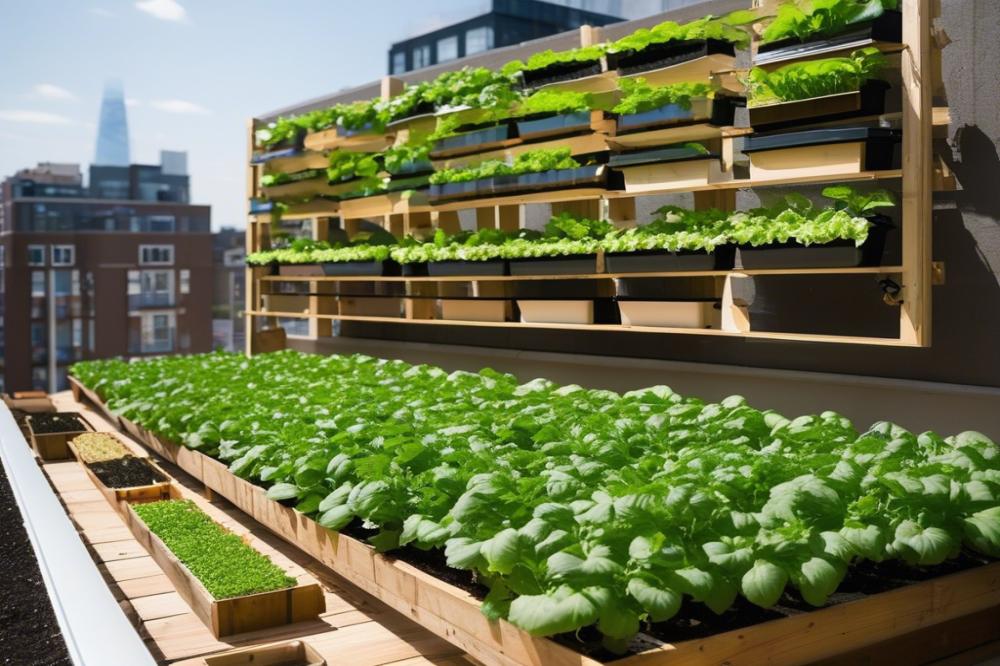

Recycled materials are items that have been repurposed instead of going to landfills. They originate from everyday products that people use and dispose of. Instead of discarding them, these materials can find a new life in hydroponic gardening. This approach supports sustainable gardening practices, emphasizing eco-friendly choices.
Types of Materials Suitable for Hydroponic Systems
Several types of recycled materials fit well into hydroponic setups. Plastic bottles are popular for container gardening. These bottles can be cut in half, creating planters that hold plants and nutrients. Old pallets often serve as an excellent framework for DIY hydroponics, allowing gardeners to create vertical gardens.
Another common inclusion is cardboard. This material can be used for creating weed barriers or as a liner to protect growing systems. Glass jars also make for great containers, providing visibility to root growth. Metal cans can be transformed into planters, making a sturdy option for urban gardening.
Examples of Common Recycled Materials Used
Many enthusiasts incorporate various recycled items into their green practices. Egg cartons can be effective for starting seeds, giving young plants a safe beginning. Additionally, used yogurt containers are ideal for growing herbs. They typically have the right size for small plants and are easy to handle.
Plastic tubs from grocery stores can become mini aquatic systems. These are perfect for holding water and nutrients. By using discarded objects like these, you contribute to waste reduction while fostering a lush environment for plants.
Upcycling doesn’t have to be complicated. For instance, repurposing rubber tires allows for creative container designs. These can be stacked or painted, adding a unique flair to a garden. By using everyday items this way, individuals support resource management efforts while enjoying the benefits of soil-less gardening.
Benefits of Using Recycled Materials in Hydroponic Gardening
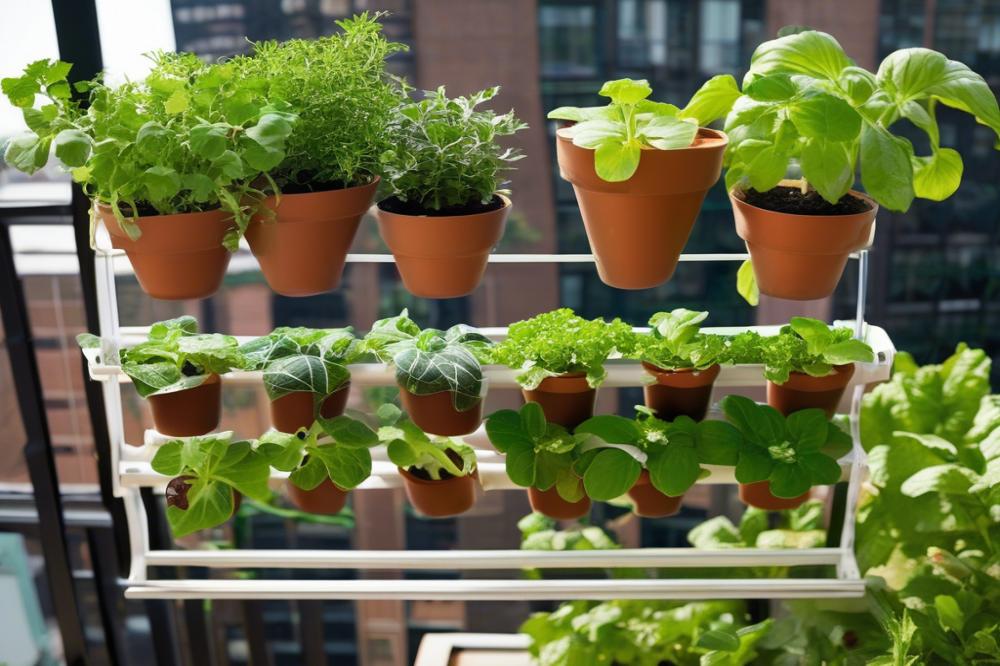

Cost Reduction and Accessibility for DIY Hydroponics
Creating a hydroponic system can be costly. However, using recycled materials significantly lowers the expense. Many common items at home can be repurposed. Old plastic bottles or containers can function as growing chambers. This approach makes urban gardening more accessible to everyone, even those on a tight budget. DIY hydroponics encourages creativity. People enjoy the challenge of building their systems with whatever is available.
Environmental Benefits and Waste Reduction
Incorporating recycled items into gardening practices greatly benefits the environment. By reusing materials, individuals actively contribute to waste reduction. Each item that finds a second life reduces garbage in landfills. Additionally, this method promotes sustainable gardening. Instead of discarding, individuals can upcycle materials into useful tools. This shift not only supports resource management but also illustrates a commitment to reducing one’s ecological footprint.
Promoting Eco-Friendly and Green Practices
Adopting recycled materials for gardening reflects a broader commitment to eco-friendly habits. Every effort counts in the fight against climate change. When people choose upcycling, they set an example for others. Their actions help raise awareness about the importance of sustainability in daily life. Using what you already have fosters a mindset of resource conservation. It encourages people to think critically about their consumption habits. Together, these small steps can lead to meaningful changes in community attitudes toward environmental responsibility.
Creative Upcycling Ideas for Hydroponic Systems
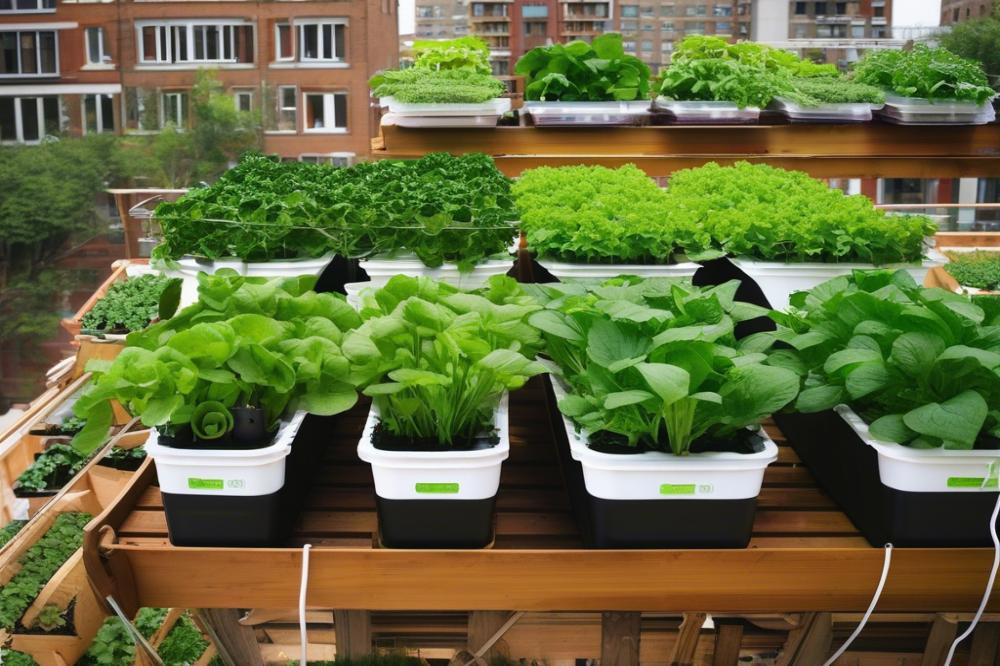

Upcycling is a fantastic way to practice sustainable gardening while being eco-friendly. Many household items can become part of a DIY hydroponics setup. For example, old plastic bottles can easily transform into self-watering planters. Just cut them in half, add some net pots, and fill them with solutions to nourish your plants.
Another common item is a used coffee container. With a little creativity, this sturdy container can serve as a reservoir for your water or nutrient solution. Drill holes for air circulation and plant roots can thrive. Moreover, food containers, like yogurt cups, can double as growing sites for smaller plants. This method encourages waste reduction and makes gardening accessible.
Innovative Designs for Containers and Growing Systems
Upcycling encourages flexible designs in urban gardening. Think about hollowed-out wooden pallets for vertical gardens. This approach takes advantage of limited space and allows for a variety of plants. Similarly, old tires can be stacked to create tiered growing beds, perfect for container gardening.
By employing discarded crates, you can construct a simple shelving unit. Layer the crates horizontally to create multiple planting levels. Paint the wood to give it character, or leave it natural for an organic feel. Such designs not only look appealing but also serve functional purposes.
How to Integrate Upcycled Materials into Projects
Start by gathering materials you no longer use. A good habit is to keep items like jars, cups, and even old bathtubs. Jars can be used as small hydroponic containers. Combine water with the right nutrients, and you are ready to grow greens or herbs.
Consider how each item can serve a dual function. For example, an old bookshelf could support various sized pots if modified. This arrangement optimizes resource management, helping you make the most of available space. It’s important to think about durability and safety, especially with recycled materials.
Additionally, look at integrating systems. A small fish tank, for instance, can power a hydroponic garden using aquaponics. This creates a synergy between the fish and plant life, enhancing your soil-less gardening practices.
Resource Management in Hydroponic Gardening
Efficient use of recycled materials can make a big difference in sustainable gardening. Many people have old plastic containers lying around. These can be transformed into perfect planter boxes for urban gardening. Boxes from takeout meals or old water bottles work well, and they contribute to waste reduction. Upcycling doesn’t just save money; it lowers the carbon footprint of your gardening endeavors. Incorporating these reused items helps create a circular economy.
Incorporating eco-friendly methods into gardening practices is crucial. Proper resource management ensures that we are mindful of how we use water and grow plants without soil. Hydroponics allows for minimal water loss and maximizes space, which is especially advantageous for container gardening. Many gardeners are turning to DIY hydroponics. By making their systems from old materials, they foster creativity while supporting green practices.
Strategic design helps in minimizing waste. Planning your garden layout allows for efficient use of space and materials. Consider vertical systems that utilize reclaimed wood or plastic shelves. They not only save space but also use fewer resources overall. Being intentional about garden design can transform what might be trash into valuable resources. With some thought, discarded items become essential parts of your soil-less gardening setup.
Resource management is about more than just recycling. It involves understanding what materials can be repurposed and how they can be integrated into your unique gardening system. In an urban setting, every little effort counts. Leveraging community items can make a big impact. Perhaps you have friends with old equipment that could be used or modified. These contributions help shape a more sustainable environment overall.
Challenges and Considerations
Using recycled materials in sustainable gardening offers many benefits, but there are some potential drawbacks. Some materials may contain toxic substances that could harm plants. For example, old plastics can leach harmful chemicals, which are not suitable for growing food. Ensuring that items are free from harmful residues is crucial.
When considering upcycling for DIY hydroponics, it’s important to prioritize safety. Avoid using any materials that have been treated with chemicals, such as pressure-treated wood or paints with lead. Additionally, some metals can corrode over time, releasing unwanted elements into the soil-less gardening environment. This can impact the health of your plants, so careful selection is key.
Sourcing materials plays a significant role in responsible resource management. Look for containers and supplies from local businesses or thrift stores. Many items can be repurposed effectively, but always research their origins. Donating or trading items can also encourage eco-friendly practices within urban gardening communities.
For container gardening, consider using glass or ceramic pots instead of plastic. These can last longer and have fewer environmental impacts. Furthermore, ensure that any reused containers have proper drainage holes. Proper aeration in hydroponic systems is essential for healthy root development.
Finally, engage with local groups focused on green practices. Sharing experiences and tips can lead to better choices. Learning from others not only builds knowledge but also fosters a sense of community. Every small step in reducing waste contributes to a healthier planet.
Final Thoughts on Sustainable Hydroponic Practices
Using recycled materials in gardening offers several benefits. Cost savings rank high on the list for most hobbyists. By repurposing items, gardeners can reduce waste while minimizing expenses. This approach fosters creativity and resourcefulness. It allows us to think differently about what we consider trash. Moreover, plants thrive when grown in diverse and unconventional environments.
The future points toward a greater emphasis on sustainable gardening methods. As environmental concerns rise, more people will likely seek ways to farm that are both efficient and kind to our planet. Hydroponic systems, when combined with recycled materials, can present a powerful solution. They provide fresh produce while encouraging responsible use of resources. This unique combination sets the stage for healthier ecosystems.
Every individual can contribute to these eco-friendly practices. Small changes at home can lead to significant impacts globally. Embracing recycled materials in gardening not only promotes sustainability but also encourages community involvement. Together, we can plant the seeds for a greener future. So, let’s dive into this rewarding hobby and make a positive change, one plant at a time.

